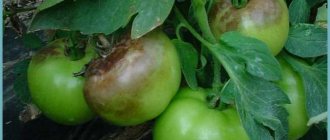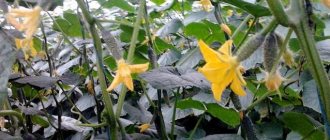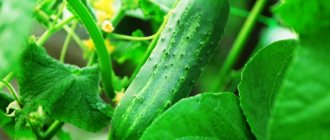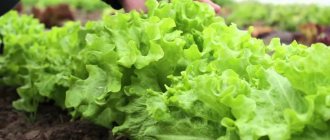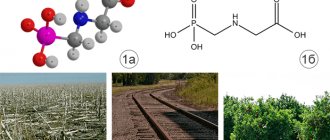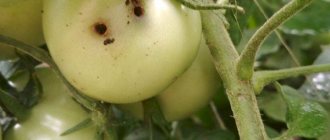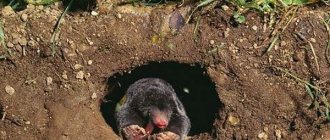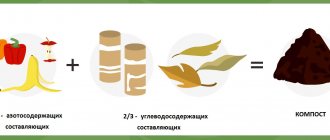Spider mites are a frequent visitor to our sites. It appears suddenly and multiplies very quickly. In a short time, this pest can infest all plantings, resulting in the destruction of the crop. In this article we will tell you what measures need to be taken to prevent the appearance of the pest and to combat it if the insect has already settled on your crops.
Spider mites and how they are dangerous for cucumbers
Spider mites (the photo below shows what infected leaf blades look like) belongs to the class of arachnids. It can appear both in greenhouse plants and in open areas.
Arachnids can differ in body color. There are red, greenish-yellow, orange and even colorless individuals. Their body grows up to 1 mm and has an oval, slightly elongated shape. After eating plant juice, the size of the insect doubles.
Female ticks are rightfully considered record holders for reproduction - they can produce up to 8,000 offspring per season. For babies, a couple of days are enough to enter puberty.
Such colonies are very voracious, they drink huge amounts of juice, which is why the plant quickly dies, and the pests move on, devouring everything in their path. If you do not stop their spread, then in a short time the mites will quickly spread throughout the garden and even the walls of the greenhouse will not become a barrier for them.
Read about fighting aphids on cucumbers.
Handy means of protecting cucumbers
An aqueous solution of 3% hydrogen peroxide is a good weapon against spider mites. To prepare one liter of solution, only 40 ml of peroxide is required. You can sprinkle cucumbers with it 3-4 times with a week break. If the heat is above 30 degrees, then spraying is allowed after 3 days.
Exactly the same solution can be made with ammonia. The preparation proportions and frequency of use are similar.
How else to get rid of spider mites, and at the same time from other pests? For example, using turpentine. It needs to be poured into jars, placed on the garden bed and covered with film over the entire crop. Under the influence of turpentine vapors, pests will die within a few hours.
You can also expel spider mites from cucumber leaves using tobacco dust. You need to lightly sprinkle the area with it - the pests will leave it. For prevention, gardeners also use tar soap cooked with birch tar.
How to determine the damage to cucumbers by spider mites
The parasite is very small in size; initially it is almost impossible to see it on the bushes. But there are a number of signs by which damage can be determined. From the photographs you can see what infected cucumbers look like.
Initial stage of damage
The appearance of cobwebs Severe damage to cucumbers
The presence of arachnids can be recognized by several manifestations:
- On the reverse side of the leaf plate, barely noticeable light dots begin to appear. A little later they spread into large spots.
- The affected areas are slightly covered with a thin layer of translucent cobwebs. The more noticeable it is, the more pests worked on its creation.
- The bushes stop growing. This is especially evident in comparison with neighboring healthy plantings.
- The leaves begin to turn yellow and fall off, and if the affected area is large, the plant withers and dies.
Stages of tick development
Read about cucumber diseases and methods of combating them, incl. about common and downy mildew (perenospora), rot, late blight, etc.
What does it look like
A spider mite is a tiny parasite of red, red, brown or milky color, which is almost impossible to see with the naked eye, since its size usually does not exceed 1 mm. Its body has a round shape and is divided into 2 parts: a smaller anterior one and a larger posterior one. The upper part of the tick's body is more convex than the lower.
An adult tick has 4 limbs on each side. On each limb there are sharp hooks, with the help of which it moves along the leaves of plants. The parasite has small bristles on its body. They can be needle-shaped, feathery or leaf-shaped and perform the function of touch.
Spider mite larvae have a greenish body with dark spots on the sides.
The tick develops in five stages: egg, larva, two nymph stages and adult.
Reasons for the appearance of spider mites on cucumbers
Most often, mites enter plantings from contaminated organic remains that may have remained from last season. It can overwinter in the soil, where it penetrates along with manure or fallen leaves. In addition, the mite remains on the walls of the greenhouse if infected crops grew inside it. Sometimes the wind brings it from neighboring plots.
The pest actively develops and reproduces only under favorable conditions. It loves high temperatures from +30 °C and dry air. But humidity above 60% is destructive for it; the larvae do not grow at such levels.
We recommend the article: Folk recipes with iodine, milk and whey for feeding cucumbers.
Pest appearance
Spider mites begin their invasion of cucumber beds in the spring, when the soil has warmed up sufficiently. The larvae crawl out of the ground and attack the young, succulent greenery of garden plants.
Also, spider mites can appear on cucumbers along with seedlings. This happens if the gardener is too lazy to treat the soil before sowing the seeds.
It is important to know that the microclimate in greenhouses and greenhouses is very favorable for the pest.
Methods for controlling spider mites on cucumbers
If the area of infection is still small, then folk remedies or biological products can help in the fight against ticks. Many gardeners prefer acaricides. But the main advantage of the insect is the ability to adapt to the effects of chemicals, so using the same product for a long time is not recommended. The effectiveness of such treatment will gradually decrease.
Measures (removing leaves, increasing humidity)
Until the affected area has increased to 40%, mechanical treatment of the plants can be carried out. All leaves that show signs of the presence of a pest must be removed and burned. If there are half of them or even more, then there is no point in processing, all that remains is to dig up the bush and destroy it. It is strictly forbidden to put it on compost.
If the parasite appears in a greenhouse, then you can fight it there by artificially increasing the humidity. This cannot be done in open beds. Gardeners begin to increase watering volumes and spray. The water should be warm. When the humidity rises to 60%, the larvae will stop being active.
Experienced gardeners prevent the appearance of mites by placing containers of water in the aisles of the greenhouse. The humidity rises, cucumbers like these conditions, but they are destructive for the mite. If you have large barrels, you can place them in the corners of the greenhouse. The water in them will heat up and can be used for irrigation. In addition, evaporation will help maintain the desired level of humidity.
If the paths between the rows are tiled, then in hot weather you can water it with water. Some gardeners place a piece of linoleum in the boundary, bending its ends to form an impromptu trough, into the bottom of which water is poured. As it evaporates, it will need to be topped up.
Why do cucumbers wither? About seedlings, planting in greenhouses and open ground on the Mister Summer Resident portal.
5 insects for ticks
Some predatory insects help in the fight against ticks. They happily eat tasty prey. Treatment with chemicals can lead to their death, so it must be carried out with great care. In the table below we have described the main natural enemies of spider mites.
| Name | Description | Peculiarities |
| Phytoseiulus persimilis Athias-Henriot | It is one of the varieties of ticks. It has a red body color, the larvae are much lighter. The length of the predator is approximately 0.5 mm. | It loves a humid environment and is active even at a temperature of +21 °C. During her life, the female is capable of laying about 100 eggs. |
| Neoseiulus californicus | Also belongs to the subclass of mites that grow up to 0.1 mm. Males are much smaller than females, and insect eggs are less than 0.5 mm, so they are almost impossible to notice with the naked eye. Adults have different colors: pink, orange, peach, or even transparent. | The female can lay up to 4 eggs per day. They don’t even need food to fully develop. The nymph appears the very next day, and after a few days the transformation into an adult occurs. |
| Amblyseius swirskii | The body of an adult individual has a slightly flattened elongated shape measuring up to 0.4 mm. Its color varies depending on what the predator was feeding on: from dark brown to pale yellow. Females are larger than males. The insect lays transparent oval-shaped eggs on the back side of the leaf plate along the veins. | During its life, an insect goes through 5 main stages of development: a larva emerges from an egg, which first turns into a protonymph, then into a deutonymph, after which an adult is formed. The entire development takes up to 21 days, this period depends on the temperature. It develops most quickly from +25 to +30 °C and at a humidity of 60-80%. The predator feeds on various insects. It eats thrips larvae, whitefly eggs and ticks with equal pleasure. If there is no prey nearby, then the insect can feed itself only on pollen. |
| Aphidimiza gall midge (Aphidoletes aphidimyza Rond.)
| Outwardly, it is very similar to a small mosquito or midge with long thin legs. An adult grows up to 5 mm in length. | Insect activity begins with the arrival of spring. During the day they sleep in cool, damp corners. And at night they go hunting. The predator is ready to live even in a greenhouse if there is enough food there. |
| Ladybugs (Coccinellidae) | These predators can grow up to 18 mm, the minimum size is 0.8 mm. Ladybugs have a characteristic wing color - red with black speckles, | Eats various small insects. In winter, the colony of predators hides en masse under a layer of leaves to keep it warmer. In the spring they crawl out of hiding and begin their activity. |
5 plants against mites on cucumbers
| Name | Purpose |
| Sagebrush | The pungent odor that the grass emits due to the essential oils, flavonoids and tannins in its composition repels pests. In addition, wormwood has an antiseptic effect. |
| Lavender | It has a pungent odor that parasites don’t like; they prefer to stay away from it. Lavender is effective in the fight not only against ticks, but also against midges, mosquitoes and moths. |
| Beans | It is best to use Liam beans to combat spider mites. It also repels mosquitoes and midges. Usually the plant is planted on trellises near fences and hedges. |
| Rosemary | It grows only with sufficient light and heat; it dies in the cold. To prevent rosemary from dying in winter, it is brought into the house with the onset of frost. |
| Tansy | In its properties, tansy is similar to wormwood. It contains more essential oils, so its smell is much stronger; insects cannot tolerate it. |
25 folk remedies for spider mites on cucumbers
Folk remedies are effective only in the initial stages of the appearance of pests. They are usually used as part of complex therapy along with stronger drugs or used as preventive measures.
| Folk remedy | Cooking method |
| Garlic tincture | 30 g of garlic are passed through a press and poured with 10 liters of warm water. The solution is left for a day, then filtered and the plantings are immediately treated. It is not recommended to store the product. |
| Pepper infusion | Add 100 g of fresh pepper to 1 liter of water and bring to a boil over low heat. The broth should simmer for an hour under a closed lid. It sits for two days and the pepper in it is ground. Next, you need to stir the liquid and strain. The result is a concentrate, which is diluted with 10 liters of water before use. |
| Ammonia | Dilute 1 tsp in 1 liter of water. ammonia. The resulting solution is used to spray the plantings 3-4 times with an interval of 1 week. The dosage must be strictly observed, otherwise chemical burns may be left on the leaf plates. |
| Ammonia fertilizer | Ammonia is a much more concentrated agent than ammonia. Therefore, you cannot replace one drug with another, so as not to upset the proportion. To prepare the fertilizer, 30 ml of ammonia is diluted in 10 liters of water. The most effective way is not to spray, but to manually treat the leaves, wiping them with a cloth soaked in the solution. |
| Mustard | Dilute 2 tablespoons of mustard powder in a bucket of water. Let it brew. Then spray the cucumbers. |
| Laundry soap | Laundry soap has disinfecting properties and creates a thin film on the surface of the sheet, which does not allow pests to lay larvae on it. Dilute 200 g of grated soap in a bucket of water and stir until completely dissolved. For greater efficiency, you can leave the fertilizer to sit for 2-3 hours, after which you can spray the plantings. |
| Diamond green | The solution is prepared from 2 tbsp. l. hydrogen peroxide and 1 tsp. brilliant greens that dissolve in 1 liter of water. Treatment must be carried out at least 4 times with an interval of 5 days. |
| Hydrogen peroxide | Pharmacy hydrogen peroxide in the amount of 2 tbsp. l. diluted in 1 liter of water. For greater effectiveness, you can add about 25 drops of iodine; it also has good antiseptic properties. The product is used for spraying to prevent the appearance of spider mites. |
| Tobacco dust | Tobacco dust is used in dry form to dust the vegetative parts of plantings. It is scattered over the plants at the first sign of a spider mite; in advanced cases it will not help. |
| Soap and tobacco solution | 200 g of tobacco leaf or dust is poured into 1.5 liters of boiling water. The resulting solution is left to infuse for 2 days, after which it is further boiled, cooled and filtered. The result is a concentrate that must be diluted with water to a volume of 5 liters. To ensure better “adhesion” of the product to the leaves, add 50 g of grated laundry soap to it. It is used both for watering the soil and for spraying and mechanical treatment of plants. |
| Tar soap | 40 g of grated tar soap are dissolved in 10 liters of water and stirred until a homogeneous mass is obtained. As a preventive measure, the plantings are sprayed; if the mite has already attacked the plants, then each leaf needs to be wiped. After some time, the plaque remaining after treatment must be washed off. |
| Garlic and cinnamon | An aromatic solution is prepared by mixing 1 tsp. cinnamon, 1 tsp. cloves, 2 tsp. Provençal herbs. All this is poured with a liter of boiling water. As soon as the infusion has cooled, add 2 tbsp. l. garlic passed through a press. The product should be infused for another hour, after which it should be strained and a little liquid soap should be added to keep the composition on the leaves after treatment. |
| Iodine | 1 liter of milk is mixed with 10 liters of water, then 10 drops of iodine are added. It is important to treat plantings only in cloudy weather or in the morning (evening) hours, when solar activity is minimal. Otherwise, burns may remain on the plants. |
| Wood ash | Used in the early stages of the disease in its pure form. Treatment is carried out by powdering plants that have begun to wither. It is best to do this after the necessary fertilizing has been applied and other preparations have been used. |
| Vodka | 2 tbsp. l of strong drink is diluted in 500 ml of water. Treatment is carried out by wiping the leaves. |
| Sulfur checker | Used in closed structures when the entire crop has been harvested. A special sulfur bomb is set on fire inside the greenhouse. The pungent odor and substances released during the fumigation process kill insects that may have remained in the soil or on the surface of the walls. Experienced gardeners recommend processing in the first days of December. |
| Potato tops | To prepare the solution you will need 1.5 kg of chopped tops, which must be filled with warm water in an amount of 10 liters. After this, it remains to infuse for 3 hours. The strained infusion is used to spray the plants. It does not affect tick eggs, so the treatment must be carried out at least twice. |
| Celandine | Used for small areas of infection or for treating indoor flowers. 1 tsp. crushed celandine is poured with 1 cup of boiling water. Once the tincture has cooled, it is filtered and each leaf is rubbed by hand. |
| Datura | The amount of datura per 10 liters of water for preparing the decoction depends on the condition of the plant: 1 kg of dry stems, 2 kg of dried stems or 3 kg of fresh ones. The solution must be boiled for 3 hours. For infusion, simply pour 100 g of dry herb into 1 liter of boiling water and leave for a day in a dark place. |
| Dandelion | 500 g of crushed fresh dandelions are poured into 2 liters of water and infused for 7 days in a dark place. After this, the product is filtered. It must be brought to a volume of 6 liters and add 50 g of grated laundry soap. |
| Calendula | 400 g of calendula flowers must be poured into 4 liters of water and left to infuse for up to 5 days. For better adhesion to the leaves, you can add 50 g of grated laundry soap. Treatment will have to be carried out repeatedly at intervals of several days. |
| Sorrel | Crushed sorrel roots in an amount of 300 g are poured into 10 liters of water and left to infuse for 5-6 hours. |
| Yarrow | 500 g of dry herb is brewed in 1 liter of boiling water, after which it is brought to a volume of 10 liters. |
| Onion and garlic peels | To prepare the infusion, you need to take 200 g of onion and garlic peels. (some gardeners use onions exclusively). Pour all this into 10 liters of water and leave for 24 hours in a dark place. Use to wipe the leaves, do it daily. |
| Horseradish | 1.5 kg of pre-crushed horseradish roots are poured into 10 liters of water. The solution must steep for at least 3 hours, after which it is filtered. For best results, it is recommended to add 50 g of grated laundry soap and stir thoroughly. Used to prevent the appearance of spider mites on cucumbers. |
Biological products
Biological preparations are effective in the early stages of mite activity. Treatment should be carried out depending on the stage of culture development. Below we have listed the most popular means.
| Name | Active substance | Characteristic |
| Fitoverm | Aversectina S | The main feature of the drug is that it has a detrimental effect only on insect pests, without affecting the environment. After the main component reaches the ticks, it is deactivated and does not accumulate in the soil. Already two days after spraying during the fruiting period, you can harvest the crop and eat it, after rinsing it with water. This does not threaten a person with any poisoning. Treatment is carried out only in dry and windless weather, the leaves are sprayed thoroughly on both sides, special attention is paid to the back side - this is where the bulk of the pests are concentrated. In good weather or in greenhouse conditions, the effect of Fitoverm can last for 21 days. But if it rains, it will wash away the remaining substance and the risk of ticks will increase. The solution is prepared strictly according to the instructions: dissolve 10 ml of the substance in 10 liters of water. The resulting quantity is enough to spray 100 sq.m of plantings. It needs to be done 3 times. The cost of Fitoverm packaging is relatively low - about 25 rubles per piece. |
| Vertimek | Abamectin, 18 g/l. | Belongs to the class of biological insectoacaricides. Available in the form of a concentrated emulsion. In good weather, it remains on the plant and protects it for 10-20 days, depending on the crop. Effective for small affected areas. When the parasite enters the body, it causes a malfunction of the digestive system; the tick can no longer feed normally and dies in the next 5 days. The cost of a 2 ml package is approximately 40 rubles. |
| Bitoxibacillin | Spore-crystalline complex | The drug belongs to the class of intestinal pesticides and is produced by the manufacturer in powder form. Getting into the digestive tract from the surface of the leaf along with plant sap, Bitoxibacillin blocks the functioning of the digestive system, as a result of which the mites die. The greatest effectiveness of use occurs 3-5 days after treatment, reaching a maximum on the 10th day. To obtain a working solution, 80-100 g of the drug is diluted in 10 liters of water. During the growing season, you need to have time to carry out 5 to 6 treatments weekly with an interval of 14 days. The cost of 20 g of pesticide is approximately 30 rubles. |
| Kleschevit | Aversectin C, concentration 2% (2 g/l) | It belongs to the group of insectoacaricides and has both intestinal and contact effects. This means that the mite can get inside the body both along with the sap of the plant and from the surface of the treated leaf through the outer integument. Paralysis of the nervous system occurs, as a result of which the insect dies. Kleschevit is produced in the form of a concentrated emulsion, which is sold in 4 ml ampoules or 10 ml bottles. Protective properties on plantings last from 7 to 20 days. In the greenhouse it begins to act 6-8 hours after spraying, in open ground - after 10 hours. To prepare a solution, dilute 10 ml in 1 liter of water. The treatment is carried out three times. 4 ml costs about 15 rubles, and 10 ml – 65 rubles. |
| Fitosporin | Bacteria Bacillus subtilis | The drug is highly effective against a large number of insect pests and is used to treat tomatoes, peppers, cucumbers, eggplants and other crops. Its significant advantage is its low toxicity, which makes it safe for animals and humans. The main active ingredients are bacteria, which protect not only from ticks, but also from some other diseases, and also increase the immunity of plantings. The protective effect lasts for 10-12 days. Fitosporin can be used to soak seeds before planting them in the ground. Spraying of adult plants should be carried out repeatedly. The price of 10 g of powder is 16 rubles. |
| Tiovit Jet | Water-dispersible sulfur granules 800 g/kg | More effective than the analogue “Sulfur Colloidal”. The period of protective action is from 7 to 10 days. After treatment, you only need to wait a day and you can already harvest. For cucumbers, dilute from 30 to 80 g of the product per 10 liters of water. Spray during the growing season from 1 to 5 times per season. The drug belongs to the 3rd hazard class (moderately dangerous substance). Available in 30 g bags. Cost 200-250 rubles. |
| Iskra Bio or Akarin | Avertin N | The higher the air temperature, the more actively the main component of the drug, Avertin, begins to act. To prepare a working solution, 1 ml is dissolved in 1 liter of warm water. The price for 10 ml is 93 rubles. |
Chemicals
| Name | Characteristic | |
| Sunmite | Just one treatment helps get rid of spider mites, regardless of what stage of development they are in. The action of Sunmite begins within 15 minutes after treatment and lasts for 6-8 weeks. Due to the toxicity of the active ingredients, spraying of plants must be carried out strictly in compliance with all protective measures: mucous membranes must be covered with a respirator, gloves must be put on hands, and rubber boots on feet. After finishing work, be sure to thoroughly wash your hands and throw away the clothes you wore during the treatment. The price of the product is relatively low - 5 kg of powder costs only 100 rubles. | |
| Karbofos | It is highly effective. It can be used several times, processing at weekly intervals. With a large affected area, the gap between treatments can be reduced to five days. When spraying, make sure that the back side of the leaf, where mites prefer to settle, is soaked with special care. To prepare the solution, use 10 liters of water and 40 g of Karbofos. It is better to spray crops in the evening or early in the morning. After this, harvesting for the table will not be possible for the next few weeks. The price of the drug is 30 rubles per 30 g. | |
| Neoron | Helps save plantings not only from spider mites, but also from some other insect pests. Unlike the vast majority of similar products, Neoron can be used even where there is an apiary nearby and bees are flying. It is not harmful to them. After completion of treatment, the plants will be protected by the remaining product for another 3-4 weeks. If you do not violate the dosage and do not carry out treatment too often, then phytotoxicity will not be observed. Spraying can be done either early in the morning or in the evening. The price for 10 ml is approximately 80 rubles. | |
| Anti-mite | It is one of the most powerful drugs created to combat spider mites. It begins to act within 5 hours, and then for another two weeks the plant is under its protection and is resistant to pests. The advantage of Antiklesch is the ability to use it even at high air temperatures, without this reducing its effectiveness. As a rule, a single spraying of the plantings is enough to completely eradicate the parasite from the garden bed. It is highly toxic. Therefore, during processing there should be no animals or smoking people nearby. All exposed areas of the body must be protected, and upon completion of work, it is necessary to burn the clothes in which they were carried out and wash your hands thoroughly with soap. The cost of 100 ml of solution is approximately 85 rubles. | |
| Apollo | The product is highly effective in the fight against spider mites. This result is achieved due to the effect on the parasite even in the larval stage. After treatment, the protective properties remain for the entire next month, which allows you not to overload the plants and soil with chemicals. Toxicity to humans is low; Apollo does not kill bees and other large pollinators. The cost of a 2 ml ampoule is 30 rubles. | |
| Aktellik | The drug has a wide spectrum of action and is capable of destroying not only ticks, but also other insect pests characteristic of garden crops. It enters the insects both with plant sap and from the surface of leaves through the skin. Due to increased toxicity, it is necessary to strictly follow the recommendations for dilution of the drug, protect exposed areas of the body and not carry out treatment during periods of high humidity, elevated air temperatures or windy weather. After spraying, wash your hands thoroughly. One package of Actellik costs about 20 rubles. | |
| Fufanon | The product is very popular among gardeners, as it effectively copes with the invasion of spider mites on cucumbers and other crops. The drug acts in a special way, creating a cloud of active substances around the plantings, which continue to have a detrimental effect on the pest even after treatment is completed. The main component - melation - does not lose its properties during the day, destroying the enemy. The residual effect continues for another 10 days, after which the treatment can be repeated. The product does not pose a danger to humans; it also does not affect the taste and quality of the fruit. A 2 ml ampoule costs 14 rubles. | |
| Alatar | Contains two active ingredients: malathion and cypermethrin. Plantings are treated at the rate of 5 ml of product per 10 liters of water per 1 hundred square meters. You can buy it in the form of ampoules of 5 ml for 15-20 rubles. | |
| Aktara | According to some gardeners, Aktara does not work against spider mites, since it is an insecticide, not an acaricide. However, some write that it has an effect, although not as pronounced as when using other means. So if you don’t have another drug at hand from those we recommended above, then you can try using it. The active ingredient is thiamethoxam. Aktar is easiest to find in powder form in 4 gram bags, costing about 120 rubles. | |
Read the article on how to feed cucumbers with boric acid.
Chemical protection products for cucumbers
Such drugs also need to be used strictly according to the instructions, not forgetting that these are poisons. They should be used as a last resort. Cucumbers can be treated with one chemical preparation only once, because the next generation of parasites is already adapted to a specific poison. During the season, 3 generations of spider mites are replaced.
A detailed study of the degree of influence of chemicals on spider mites shows that after the first treatment, half of the insects die. After the second spraying, only 10% of these tiny pests remain alive. That is why the area has to be processed three times with intervals of 4 - 6 days.
How to properly treat cucumbers with medications
Regardless of what type of treatment you choose, it is recommended to carry it out only in the early morning or evening so that solar activity is minimal. Choose calm weather with moderate humidity.
Chemicals should be used taking into account their effect on beneficial insects. This is especially important during the flowering period: pollinated varieties after treatment may not wait for the bees if a drug that is toxic to them was used. Accordingly, harvest volumes will be greatly reduced.
Biological drugs are harmless to humans. They remain on the fruits for up to three days, after which the vegetables can be removed from the bush and eaten after washing. Chemicals remain on the fruits for a very long time; they can only be collected a few weeks after spraying.
If the product remains and all the plants have already been sprayed, you can treat the greenhouse or spill the soil.
Important! Carefully read the instructions for each product you use, do not violate dosages and use personal protective equipment if necessary.
Biological remedies
Biologically active drugs are not chemical. The bacteria they contain enter the plants without causing them any harm. At the same time, they are deadly for spider mites and a number of other insects. After these bacteria enter the tick’s body along with the juice, the insect becomes ill and soon dies.
The real result with the use of biological products occurs 12 hours after spraying. Such drugs act for a long time. There are a lot of them, but the principle of operation is the same for all. The most popular among gardeners are the preparations “Bi 58”, “Aktofit”, “Vertimek”, “Akarin”, “Agravertin” and “Kleschevit”.
You should know that spider mite eggs laid underground, as well as the larvae located there, are not exposed to biologically active drugs.
The use of these protective agents for different plants should be carried out differently. So read the instructions carefully and strictly follow their instructions.
Differences in the fight against spider mites on cucumbers in a greenhouse and open ground
Methods for killing mites depend on where your plants are planted: in a greenhouse or in an open garden bed.
Before the start of the season, the ground is dug up and disinfected. In order not to miss the enemy, you need to regularly inspect the plantings, paying special attention to the back of the sheet.
Most often, the mite does not immediately move to the crop; first it settles on the weed. Therefore, it is so important to weed the beds in a timely manner. If a weed with spider mite symptoms is noticed next to cucumbers or other vegetables, it is necessary to carry out preventive treatment of all nearby plantings.
If a pest gets into a greenhouse, it will begin to develop and multiply there faster due to suitable conditions. Therefore, it is necessary to maintain a humidity level inside the structure of at least 60%, at which the mite cannot exist normally.
You can begin preventive treatment of the greenhouse in the fall. During this period, the space inside it is fumigated with a sulfur bomb, after which the soil is dug up and fertilized with phosphorus fertilizers. All internal surfaces, including trellises and other tying devices, must also be treated with a disinfectant solution.
To avoid the proliferation of pests that have gone for the winter, it is recommended to remove the top layer of soil and transport it outside the site.
Read why cucumber ovaries and leaves can dry out and what to do.
Prevention
Spider mites are quite difficult to fight, and therefore preventive measures will help prevent the mite from being carried into the greenhouse. What should you pay attention to?
- Check leaves regularly for mites. Insects noticed in time will help to deal with the problem faster.
- When purchasing seedlings, do not immediately bring them into the greenhouse. Give her a little quarantine. Leave it in the room or outside for several days. If the seedlings are infected, then after a few days the mites will make themselves felt.
- Pests on cucumbers do not like strong odors, so between planting cucumbers you can plant marigolds, calendula, garlic, and onions. Or put on the garden bed picked plants that insects cannot tolerate: tansy, celandine, dandelion, yarrow, wormwood.
- Loosen the soil more often, but carefully, since the roots of cucumbers are located on the surface.
- Mites from weeds in the garden can be blown into the greenhouse by the wind, so get rid of the weeds.
- Ventilate the greenhouse.
I wish you good harvests!
Preventing the appearance of spider mites on cucumbers
The appearance of any insect pest, including spider mites, is easier to prevent than to deal with the consequences of its activity. Correctly carried out processing will help reduce the risk of these uninvited guests appearing in the garden.
It is enough to create and maintain the right conditions in a greenhouse or greenhouse, weed all the beds in a timely manner, monitor the condition of the plantings and carry out preventive work in the fall.
Prevention of spider mites in greenhouses and greenhouses
Spider mites love dry and warm microclimates. Very often, these are the conditions that arise in greenhouses, so you should always monitor these indicators inside the structure and adjust them as necessary. There are a number of ways to help reduce the risk of pests:
- Maintain the humidity level at 70%; already at 60% the mite loses the ability to develop normally.
- After harvesting, all the soil, especially in the corners - the pest’s favorite wintering place - is dug up well. If possible, it is better to remove the top layer altogether and take it out of the greenhouse.
- Fertilize the beds with phosphorus fertilizers.
For your information! Some mites do not have time to burrow into the ground in time and remain to overwinter on the walls and frame, so all surfaces inside the greenhouse must be disinfected at the end of the season.
Preventive measures in the garden against spider mites
If the summer is hot and dry, then ticks multiply many times faster than under normal conditions. Therefore, it is very important to carry out preventive treatment even before a horde of insects appears on the site.
To avoid misfortune, you must follow a number of simple rules:
- Burn all remaining tops after the bushes are harvested. Parasites could remain on the leaves, which will calmly overwinter in the garden bed, and wake up with new strength in the spring.
- It is good to dig up the soil both after harvesting the plants and before planting them.
- Regularly weed the beds and between the rows.
- Plant calendula next to vegetables.
- Inspect the plants and check for the presence of parasites on them; treat the affected areas immediately or remove them altogether.
After a spider mite attack, plants begin to wither and their immunity decreases. This leads to plantings becoming susceptible to various diseases.
Causes
A greenhouse is the most favorable place for spider mites to breed: it’s all about elevated air temperatures and minimal humidity. Predisposing factors for the appearance of the pest are:
- excessively dense planting of cucumbers;
- increased dryness in the greenhouse;
- adding mite-infested manure to the soil;
- leaves and stems not harvested after harvest;
- planting cucumbers in one place for several seasons in a row.
Dense planting of cucumbers can lead to the appearance of spider mites.
With prolonged mite infestation, dehydration occurs, which contributes to the loss of nutrients and a decrease in plant immunity. The result is the addition of a bacterial or fungal infection. Together, the disease and the pest lead to deformation, yellowing and death of the bush.
Tips from Mister Summer Resident
Our portal https://mrdachnik.com reminds:
- Spider mites overwinter in the upper layers of the soil, and with the onset of warmth they begin to move to weeds. To prevent this from happening, many gardeners plant a lawn on the plot, which significantly reduces the number of weeds.
- At the first sign of a mite, it is necessary to begin treating the plants and repeat it every 5-15 days, depending on the scale of the disaster and the stage of crop development.
- Phytoseiulus insects have performed well in the fight against mites: they can be bought in a specialized store and placed on infected plantings.
- If the parasite has managed to occupy a large territory, then only chemicals will help defeat it. They should only be used with all precautions.
Signs of fruit damage
The main signs of spider mite infestation of cucumbers include the following:
- formation of light spots on the leaves. If the parasite remains on the plant for a long time, a large number of spots also appear on the back side of the leaf blades;
- the plant is entwined with an almost invisible web;
- the growth of vegetable crops slows down;
- the leaves begin to turn yellow quickly;
- the base of the plant begins to wither and dry out;
It is extremely important to detect spider mites as early as possible, which will allow you to quickly cure the plant and avoid its death from infection with the parasite.
Advice from experienced gardeners
A few recommendations from experienced gardeners:
- It is best to process the crop in the morning and evening;
- Before spraying, it is necessary to collect ripe fruits;
- start processing from the inside of the sheet;
- drugs are selected in accordance with a certain phase of tick development;
- at temperatures from 12 to 20 degrees, plants are irrigated once every 2 weeks, above 20 degrees - once every 7 days.
Previous
Mites Spider mites on eggplants: how to save your crop from a dangerous pest
Next
MitesSpider web on strawberries: how to recognize a dangerous parasite in time and save the crop
Preventive actions
Carrying out preventive measures will prevent the invasion of parasites. Prevention:
- inspect the inner surface of the sheets;
- attract a natural enemy - the phytoseiulus mite. It can be purchased at a specialized gardening store;
- dig up the soil in the spring;
- destroy weeds;
- tomatoes are planted between cucumber bushes;
- observe crop rotation.
